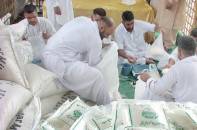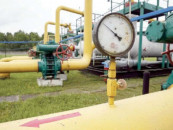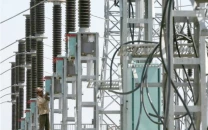Link between budget and current account deficits
Every govt has struggled to bridge the gaps but has failed miserably

The budget deficit and the current account deficit are the two critical problems for Pakistan’s economy.
Every previous government has struggled to tame these two beasts but has failed miserably. They have become extremely resilient and unmistakably recurrent in Pakistan’s recent history.
This is because they are a natural culmination of the structure of Pakistan’s economy. In this article, we would strive to understand why this is so?
Budget deficit refers to the situation where a country’s expenses outrun its revenue streams. The country in this situation resorts to borrowing from banks or the people to fund this gap.
The current account deficit basically arises when the inflows of foreign exchange in the country in the form of exports and remittances can’t keep pace with the outflows in the form of imports. This creates pressure on the currency which in Pakistan’s case leads to depreciation of the rupee.
Both of these deficits have become chronic and have reached alarming levels. Let’s understand the inherent economic structure that leads to these deficits.
This investigation starts with the fundamental question. Who is making money in Pakistan? The two major categories of people who are making money are the ones dealing in real estate business and agriculture. Let’s understand the real estate realm first.
For the past few decades, real estate has been the most lucrative investment avenue in Pakistan. It has exhibited average return of 15% in the last 10 years (according to various indices of Zameen.com).
If we incorporate the rental yield of 5%, the average return reaches 20% for the last 10 years, which is even higher than the average return of stock market (17%).
Generally speaking, investors double their money in this sector in a few years without much effort. So, most of the money goes to this sector.
Even the profit of exporters gets channeled here rather than investment in their own factories due to the lucrative returns offered here.
Furthermore, the taxation in this sector is next to none. So the sector making the most money pays almost no tax.
According to an estimate, the value of real estate sector in Pakistan ranges from $300-400 billion whereas tax numbers are scarcely available.
Just to highlight the gravity of the situation, in the second half of 2019, the total property tax collected was less than Rs10 billion with the contribution of Sindh less than Rs2 billion. Hence, we have the budget deficit.
Secondly, these investments are somehow indexed to the dollar. This can be understood if you ever indulge in conversation with an investor in this segment. They generally say “Dollar itne ka hogaya tou plot tou itne ka hoga….”
Therefore, their incomes and profits are immune to the rupee devaluation. They don’t care if the dollar reaches 200 or 250 as their incomes are indexed.
So, they buy big cars, fill them with imported fuel, buy imported products and go for lavish vacations. All these avenues consume a lot of foreign exchange. Hence, we have a current account deficit.
Agriculture business is also similar. The sector is highly subsidised and taxation here is also minimum.
According to an estimate, the agriculture contributes 20% to the country’s gross domestic product (GDP), whereas the contribution of this sector to direct taxes is less than 1%.
Similarly, the gap between the actual tax collection from agriculture and the potential tax in this sector is about 90%. Hence, only 10% of the potential is collected.
Income is high because the support price mechanism works in favour of the landlords. You don’t have to be an economist to understand this fact.
You just need to visit Khalid bin Waleed Road and ask any car dealer. They would tell you that the landlords come at the time of every harvest, give their car keys to the dealers, take new cars at whatever price and go away.
Right now, a brand new Land Cruiser is priced around Rs80 million and there is a delivery time of several months for this vehicle.
In agriculture as well, too much money is being made and too little tax is being collected. Since these people make so much money, which is not taxed, they also buy all possible imported goods, which causes a lot of pressure on the external account.
Someone needs to look at these problems and avoid shying away. Otherwise, these two deficits will keep on emerging again and again till the time when nothing will be left to exploit through such rent-seeking behaviour.
The writer is a banker and teaches economics
Published in The Express Tribune, May 30th, 2022.
Like Business on Facebook, follow @TribuneBiz on Twitter to stay informed and join in the conversation.



















COMMENTS
Comments are moderated and generally will be posted if they are on-topic and not abusive.
For more information, please see our Comments FAQ